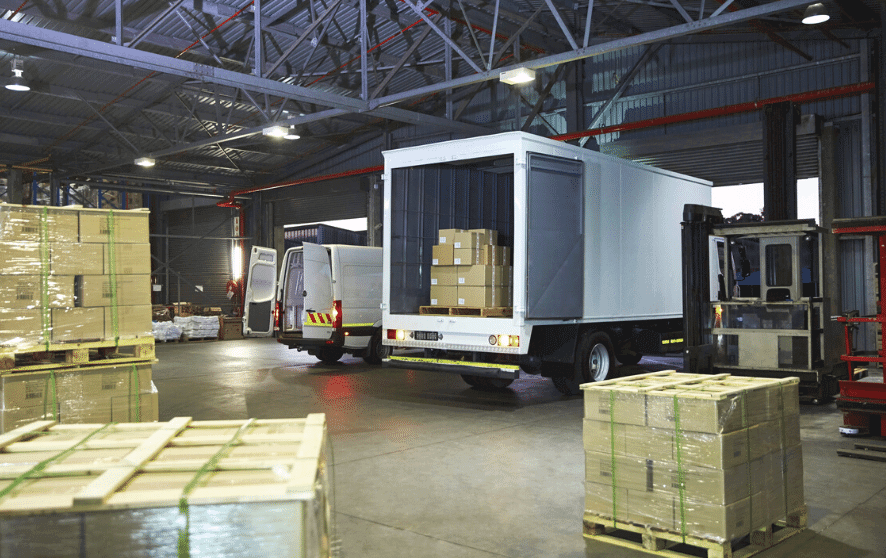In order to answer your request, we are obligated to process the data given above. Sometimes, however, we would like to use them for slightly different purposes, such as statistical data or informing you about our new products and services.We promise that we will use the given information for communication purposes only. We also remind you that you can unsubscribe from our mailing at any time (see Privacy Policy).
At a time of severe restrictions being applied to conventional trade, many e-commerce businesses are experiencing a real siege – comparable to and often surpassing the sales peaks of November and December. Some e-stores base their operations on external partners – logistics operators. In this case, it is the logistics operators who are mostly burdened with the dynamic increase in orders, as unlike IT systems and their capacity, warehouse operations are much more difficult to scale, and it is tricky to boost their efficiency.
Challenges to logistics in times of crisis
During the state of epidemic threat, a responsible logistics operator must additionally ensure the safety of both its employees, the drivers who come into contact with them, and – indirectly – the consumers. Any actions undertaken require the implementation of supplementary procedures, which engage both material resources and manpower. The moment when a logistics operator faces, on the one hand, an exponential increase in the number of operations and, on the other hand, potential staff shortages (sick leaves, more work related to safety procedures, care allowances) is a good time to automate processes that were previously carried out manually.
Manual operations are slow, ineffective, and imperfect
The logistics operators who suffer from a certain technical debt are left to resolve the following operational challenges:
- import of orders from customers’ online stores via XLS or CSV files sent by email or FTP,
- orders copied directly from the back-end of stores,
- sending stock levels by email or uploading them to FTP once or even several times a day,
- handling order statuses manually or using files,
- sending consignment numbers for completed shipments manually or using files,
- multithreaded printouts from multiple systems (for example, waybills, delivery notes, contract withdrawal forms), delivering them to the order-picking station and matching them with parcels,
- recording returns in Excel files and reporting them via email,
- lack of information on which employee packed a specific order and when,
- lack of information on order statuses in real-time.
If you are a logistics operator who is facing the above challenges, now is the time to consider implementing a suitable solution. Linker’s OMS system software allows you to automate these and other areas quickly and efficiently.
What can automation do?
The implementation of the Linker platform allows you to automate the process of data exchange between the warehouse and online store systems to the fullest extent. With this tool, you can:
- perform stock levels updates online,
- automatically generate orders,
- automatically modify and mark order statuses,
- automatically transmit information on parcel numbers to the store,
- handle returns and delivery notifications.
Pssst...
(If you're curious about how Linker Cloud manages stock, be sure to read our Tech Overview series)..png?width=1170&name=MicrosoftTeams-image%20(7).png)
Moreover – thanks to the Linker platform – it is possible to implement a systemic approach to managing the packaging process of orders and printouts. By centering activities around one packing station, it is possible to minimize the risk of mistakes.
The assignment of all these operations to the Linker tool helps to eliminate any redundant processes, such as manual data exchange, the use of multiple systems by multiple employees, or printout transfer. The platform allows you to avoid packing errors thanks to product scanning and any mistakes in deliveries by printing labels at the packing stage. All this contributes to significant savings in the workload and helps to streamline operations in the event of an emergency.
Rapid implementation is vital
The deployment of the Linker platform is a tangible benefit that does not take many months, as is the case with conventional IT system implementations. It is a SaaS tool available as a service, whose launch takes between 1 and 3 weeks (assuming the ability to combine integrations and couriers available in the platform).
As part of the deployment, the Linker team works with the operator to determine the baseline functionality package, which is to be launched. A phased approach enables rapid implementation of the platform in its basic scope, the ability to respond adequately to the needs of emergencies, and in the future to add further functional areas. Linker Cloud Fulfillment Platform is a solution tailor-made for the current challenging times and a tool that can be further expanded in the future.
Be sure to check out the ever-growing list of integrations available in our OMS software.





